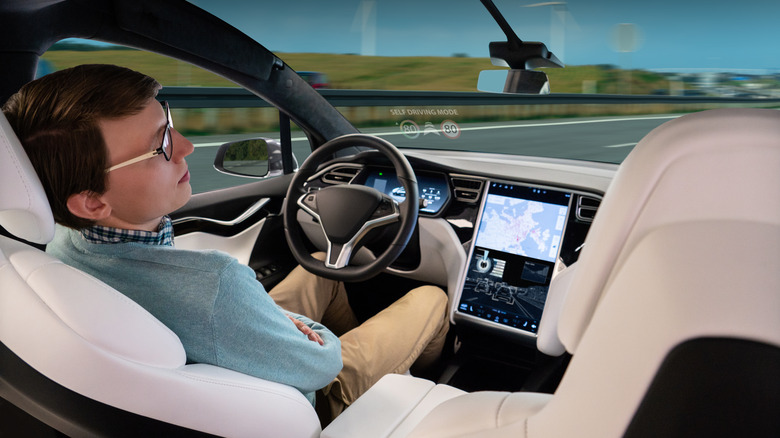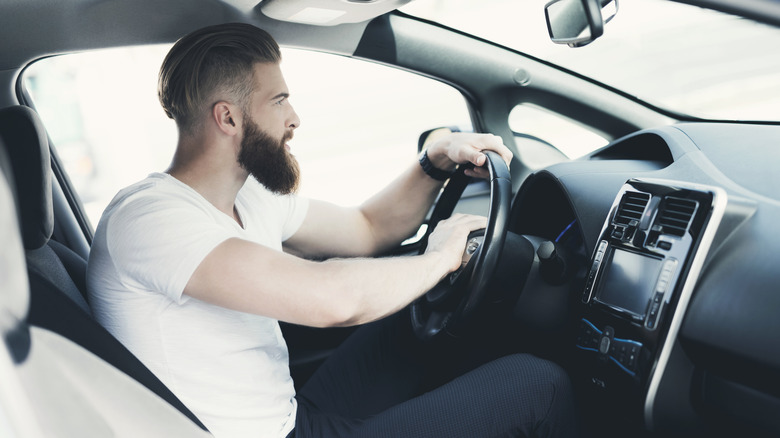This Big Tesla Autopilot Change Is Going To Be Controversial
Tesla announced some big Autopilot changes that might make those looking to buy its electric vehicles brand-new think twice about their decision. The Tesla Autopilot feature has been a staple in its EV lineup since 2014. By using an array of cameras, radars, ultrasonic sensors, and Tesla's ever-improving software, Autopilot can offer advanced driver assistance or even full vehicle autonomy. However, the Tesla Autopilot system also came with certain limitations that raised concerns among owners in the past. While previous models used to have LiDAR sensors for measuring distance, Tesla later dropped them in lieu of a more camera-based system in 2021.
This leaves the Autopilot feature becoming more dependent on Tesla Vision — a system that utilizes artificial intelligence along with the car's built-in high-definition cameras to determine potential road hazards and provide driving aids. Tesla placed more emphasis on this approach by omitting radars from its current EV lineup. Now it seems like the carmaker is doubling down on its vision-reliant autopilot system by announcing the removal of ultrasonic sensors. Of course, this could also lead to some undesired effects for new Tesla owners.
What the latest Tesla Autopilot update means for new owners
According to Tesla, the removal of ultrasonic sensors will be the norm for every newly produced model moving forward, starting with EVs manufactured in North America, Europe, the Middle East, and Taiwan. This change will reflect on every Model 3 and Model Y from October onward, with the 2023 Model S and Model X to follow suit. During this transition, however, models without ultrasonic sensors will also come with limited features, such as Park Assist, Autopark, Summon, and Smart Summon. These features will all be either limited or disabled on the new Tesla models "for a short period of time."
Tesla explained that the said features will later be restored via over-the-air updates, but only after the newer batch of vehicles has matched the performance standards of its existing fleet. It's quite absurd how new Tesla owners will be receiving fewer parts and features for their newly purchased vehicles, especially when much older examples already offer everything from the start. And it's even more absurd when they're forced to test out an experimental Autopilot system that's heavily dependent on Tesla Vision. That said, it's a wonder if using a strictly vision-based means of providing driver assistance and vehicle automation would again lead to instances like the Tesla Autopilot mistaking the moon for a traffic light. Either way, the new Autopilot update goes to show that Tesla apparently believes less is more.

